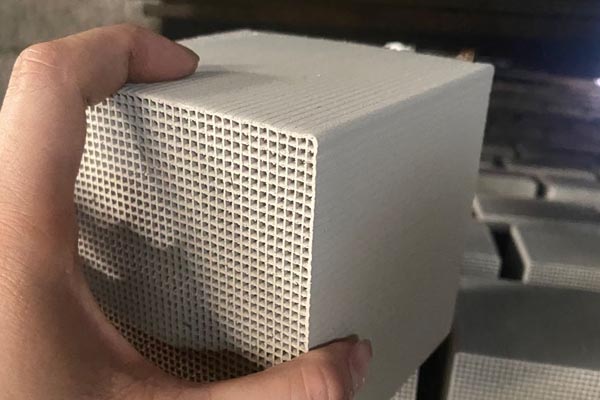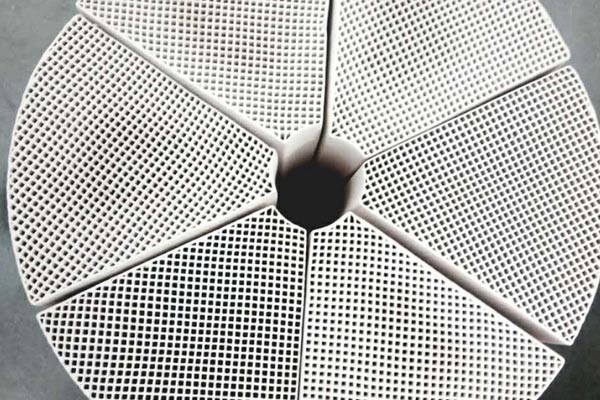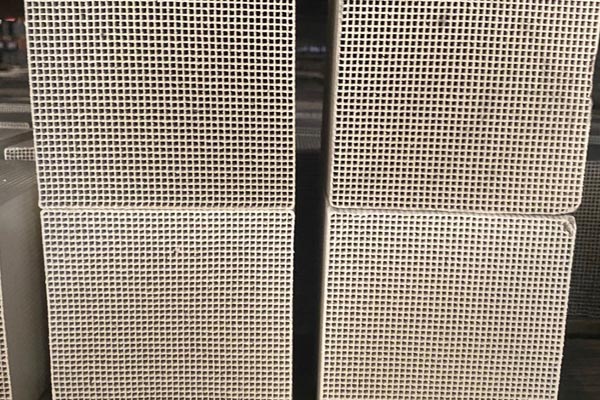
The main material of honeycomb zeolite adsorbent is natural zeolite. The zeolite manufacturer is an inorganic microporous material composed of sio2, al_2o_3 and alkaline metal or alkaline earth metal, Air purification activated carbon major Its inner pore volume accounts for 40-50% of the total volume, and its specific surface area is 100-500 m2/g. It is characterized by high temperature resistance, non flammability, good thermal stability and hydrothermal stability. It is an efficient molecular sieve carrier with good adsorption performance, no secondary pollution, and can be regenerated at high temperature. Compared with honeycomb activated carbon, its performance is about 25% of its efficiency, but it has high temperature resistance and is not easy to ignite Catalysis and environment are widely used, which is more suitable for the treatment of organic waste gas with large air volume and low concentration. Zeolite adsorbent products include microporous adsorbent and mesoporous adsorbent. Air purification activated carbon Direct selling (1) Microporous molecular sieves with molecular pore size below 2 nm and mesoporous molecular sieves with molecular pore size between 2-50 nm (50 nm The above are macroporous molecular sieves), mesoporous molecular sieves have high specific surface area, regular and orderly pore structure, narrow pore size distribution, continuous and adjustable pore size and other characteristics, which make it play an important role in the adsorption, separation and catalytic reaction of macromolecules that are difficult for many microporous molecular sieves to complete. (2) Therefore, molecular sieve materials with different properties and pore sizes shall be configured according to the different components of organic waste gas during selection, so as to achieve targeted organic waste gas treatment, meet the design requirements and emission standards.

High silica zeolite type molecular sieves, this kind of zeolite has a series, and ZSM-5 is widely used, with ZSM-8 and ZSM-11 having the same structure; The other group is ZSM-21, ZSM-35 and ZSM-38. ZSM-5 is often called high silica zeolite, with the Si/Al ratio up to 50 and ZSM-8 up to 100. This group of molecular sieves also shows hydrophobic characteristics. Air purification activated carbon Direct selling Their structural units are similar to those of mordenite, consisting of pairs of five membered rings, with no cage like cavities and only channels. ZSM-5 has two sets of cross channels, one is straight through, the other is zigzag perpendicular to each other, both formed by ten yuan rings. The channel is oval and its window diameter is (0.55-0.60) nm. Air purification activated carbon major Zeolites belonging to the high silicon group also have silicalite-1 of all silicon type, which has the same structure as ZSM-5, and silicalite-2 is the same as ZSM-11.

Honeycomb zeolite molecular sieve is a kind of aluminosilicate material containing alkali metal or alkaline earth metal oxide with open framework and regular pore cage structure. It has been widely used since it was discovered by Swedish scientists in 1956, and then it has been widely used in petrochemical industry, environmental protection, bioengineering and other fields due to its special physical characteristics. Air purification activated carbon major And with the gradual expansion of the demand for zeolite molecular sieves, researchers began to expand a variety of synthetic methods of zeolite molecular sieves to meet the needs of various fields. Zeolite molecular sieve has super strong adsorption performance, which is due to a "surface force" generated by molecular gravity on the solid surface. When the fluid flows, some molecules in the fluid collide with the adsorbent surface due to irregular movement, resulting in molecular concentration on the surface, reducing the number of such molecules in the fluid to separation Purposes of clearing. Air purification activated carbon Direct selling Since the adsorption does not undergo chemical changes, as long as the molecules concentrated on the surface are managed to drive away, the zeolite molecular sieve will have the adsorption capacity again. This process is the reverse process of adsorption, which is called the resolution or regeneration process.

Air purification activated carbon Hubei Zeolite molecular sieve is a kind of excellent adsorbent, which is widely used in the production of basic organic chemical industry and petrochemical industry, as well as in the treatment of harmful gases nox、co、co2,nh3,ccl4、 Purification of water vapor and gaseous hydrocarbon waste gas; As well as air purification and deodorization in biochemical industry, paint industry, underground places, leather factories and animal breeding places; Adsorption of flue gas odor, removal of mercury vapor, etc. Strong adsorption selectivity. The pore size of molecular sieve is uniform, and it is also an ionic adsorbent. Therefore, it can selectively adsorb according to the size and polarity of molecules. It can effectively remove ethylene, propylene and acetylene from saturated hydrocarbons, which is determined by its strong polarity. Air purification activated carbon Direct selling In addition to physical adsorption, chemical reaction also often occurs on the surface of zeolite, which contains a small amount of chemical combination, oxygen and hydrogen in the form of functional groups. These surfaces contain oxides or complexes that can react with the adsorbed substances, so that they can combine with the adsorbed substances and aggregate to the interior and surface of zeolite.



